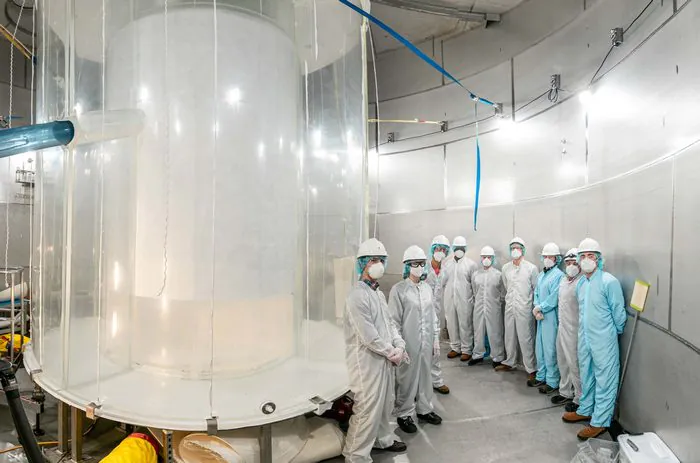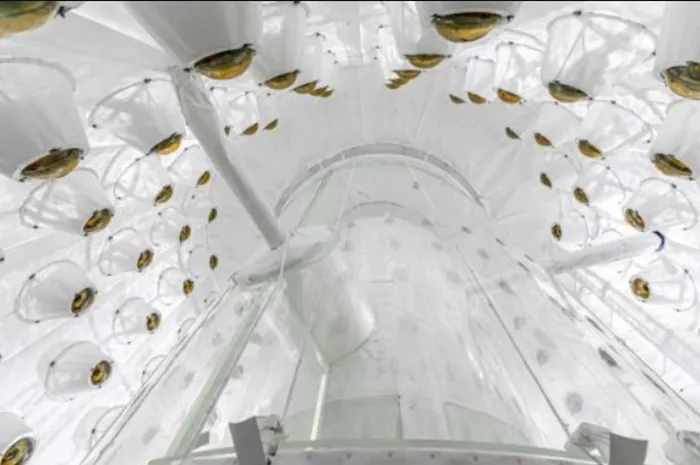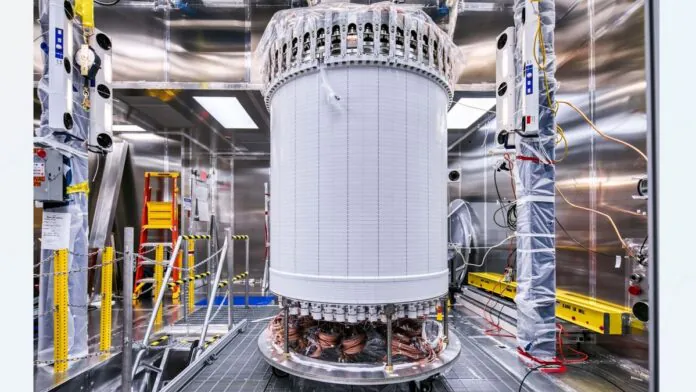© ROOT-NATION.com - Use of content is permitted with a backlink.
Deep under the Black Hills of South Dakota, at the Sanford Underground Research Facility (SURF), an innovative and uniquely sensitive dark matter detector experiment – the LUX-ZEPLIN (LZ), led by Lawrence Berkeley National Laboratory – has passed the control stage of launch operations and received its first results.
Researchers report the start of a full-fledged scientific work. The first scientific data, published in an article on the LZ experiment website, showed that all settings were made correctly. The device is ready to search for dark matter.

LUX-ZEPLIN is located more than 1.5 km deep at the Sanford Underground Research Center in South Dakota. The experiment is designed to capture weakly interacting massive particles or WHIMPs. Placing the sensors underground should protect them from cosmic radiation, which can drown out dark matter signals.
The basis of the detector is two nested titanium tanks containing about 10 tons of very pure liquid xenon. They are viewed by two arrays of photomultiplier tubes (PMTs) capable of detecting weak light sources. Containers of gas are placed in a larger detector system to catch particles that can mimic a dark matter signal.

Collisions of particles in xenon cause visible flickers or flashes of light, which are registered by PMTs, the scientists explain. In addition, such interactions will also knock electrons out of the xenon atoms, causing them to drift toward the top of the chamber under the influence of the electric field. There they will create another flash, which allows the spatial event to be reconstructed. Researchers analyze scintillation characteristics (short-lived luminescence) to determine the types of particles interacting in xenon.

Invisible because it does not emit, absorb, or scatter light, dark matter is fundamental to our understanding of the universe. For example, the presence of dark matter, which is estimated to make up about 85% of the total mass of the universe, determines the shape and motion of galaxies.
So far, no one has managed to find particles of dark matter. Researchers believe that the new detector, which has become the most sensitive in the world, will help solve this problem. “We plan to collect about 20 times more data in the coming years, so we’re only getting started. There’s a lot of science to do and it’s very exciting!” said Hugh Lippincott of the University of California Santa Barbara and LZ spokesperson.
You can also help Ukraine fight with Russian occupants via Savelife or via an official page of the National Bank of Ukraine.
Subscribe to our pages in Twitter and Facebook.
Read also:
- World’s first sand battery started operation in Finland
- Scientists have found out how the first quasars in the universe were formed


